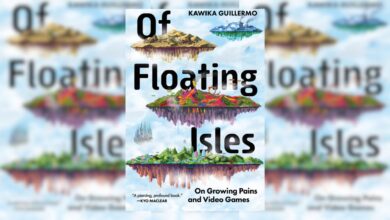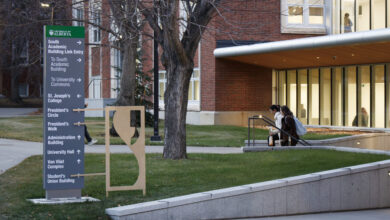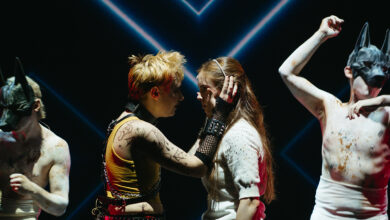Exhibit Review: ‘Built to Last’ at FAB Gallery
'Built to Last: Architecture, Memory and the Imaginary Atrium,' presents two artists' observations of each other's cities through print.
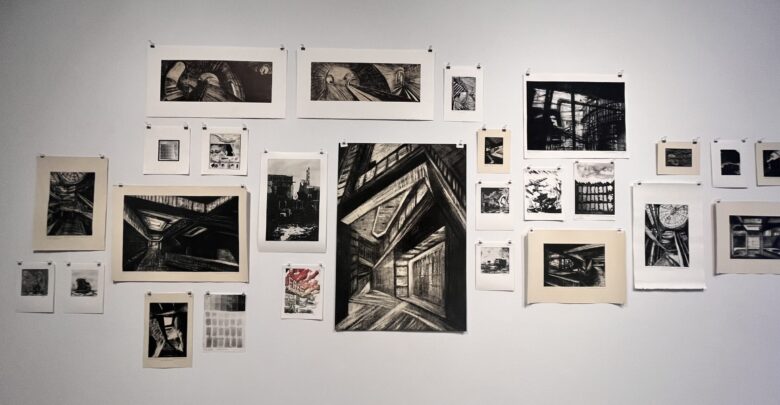 Lale Fassone
Lale FassoneThrough creative mediums, artists Alicja Habisiak-Matczak and Alex R.M. Thompson admire each other’s cities through a shared interest in architecture and environmental surroundings. This exchange is showcased at the FAB Gallery in Built to Last: Architecture, Memory and the Imaginary Atrium.
Habisiak-Matczak explored Edmonton, specifically the University of Alberta’s North Campus. At the U of A, Habisiak-Matczak learned to use new technology such as carbon dioxide (CO2) lasers. She then used the lasers to transfer drawings onto woodcut and plexiglass, making engraved prints and structural works that resembled architectural models. Through these models and prints, she reflected on her observations.
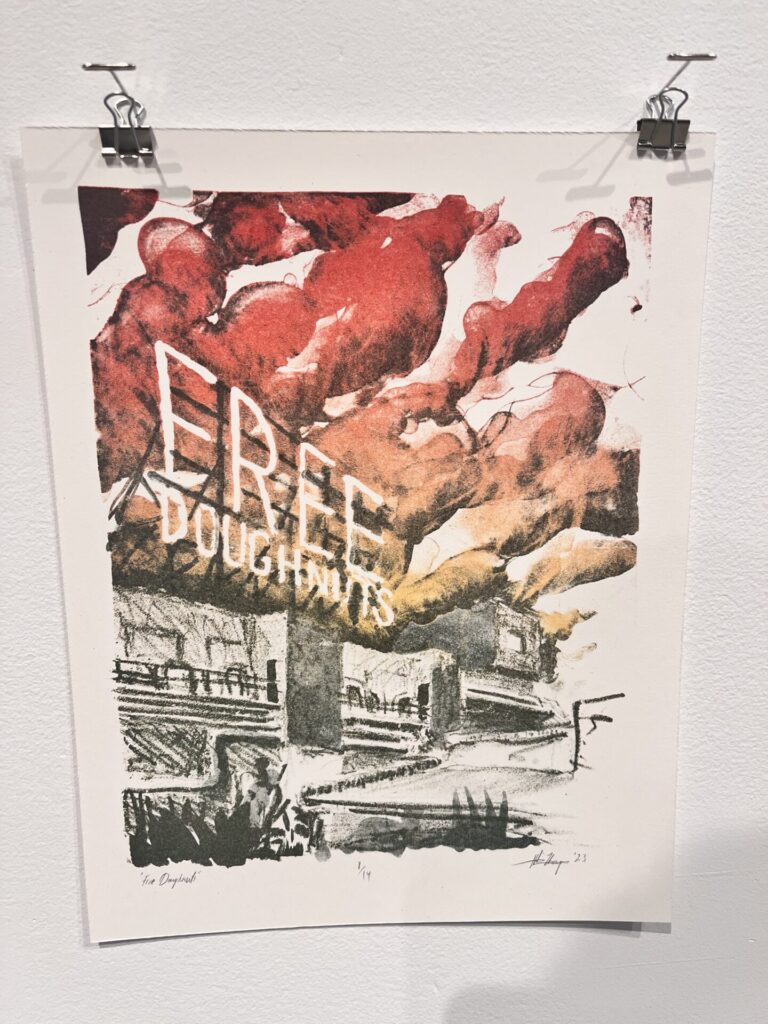
On the other hand, Thompson explored the city of Lodz in Poland. He focused on how architecture bloomed during the Industrial Revolution. Thompson contextualized this focus with the extensive history of the textile industry in Lodz.
The two artists complement one another in ways that are only evident when placing their pieces right next to each other. There are moments where Habisiak-Matczak reflects constant movement within architecture through swirls and powerful hatching (close parallel lines), while Thompson reflects the stillness in architecture.
The exhibition reflected a monochromatic feel, with colour only being reflected in two pieces. Specifically in the work Free Doughnuts by Thompson, the colour is subtle, not portraying a pop of colour one would expect. The other works were all in grayscale, making the ambience that much more industrial.
One could understand the amount of experimentation it took for the artists to best reflect the nature of structural architecture. Their experimentation is directly represented in a collage of both artists’ works. There is a range in size of the pieces. I felt like I was looking at two cities through a single window, both through an industrial-age lens.
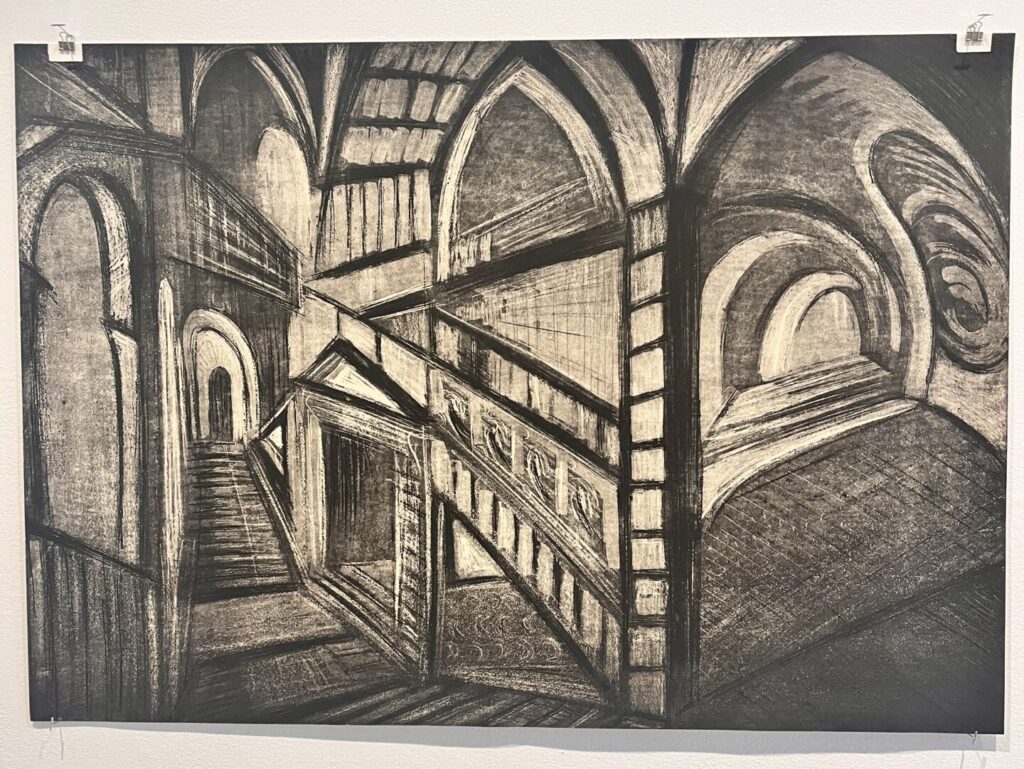
Just before the collage, there is a wall dedicated to a video of the two artists both reflecting on their experience of exchanging cities. Habisiak-Matczak heavily reflected on how the hardest part was learning about new technology and implementing it in her artwork to combine the “innovative and the traditional.” Thompson mentioned his experimentation with the different textures he found around Lodz and overlapping them to achieve new visuals. His focus was on textural memory to demonstrate architectural history.
The exhibition serves as a comparison between the two artists. Where Thompson adds great fine detail to a piece, Habisiak-Matczak counters that through hatching, displaying a sense of chaos, like in the piece Hotel Lambert in Paris: Polish Visions.
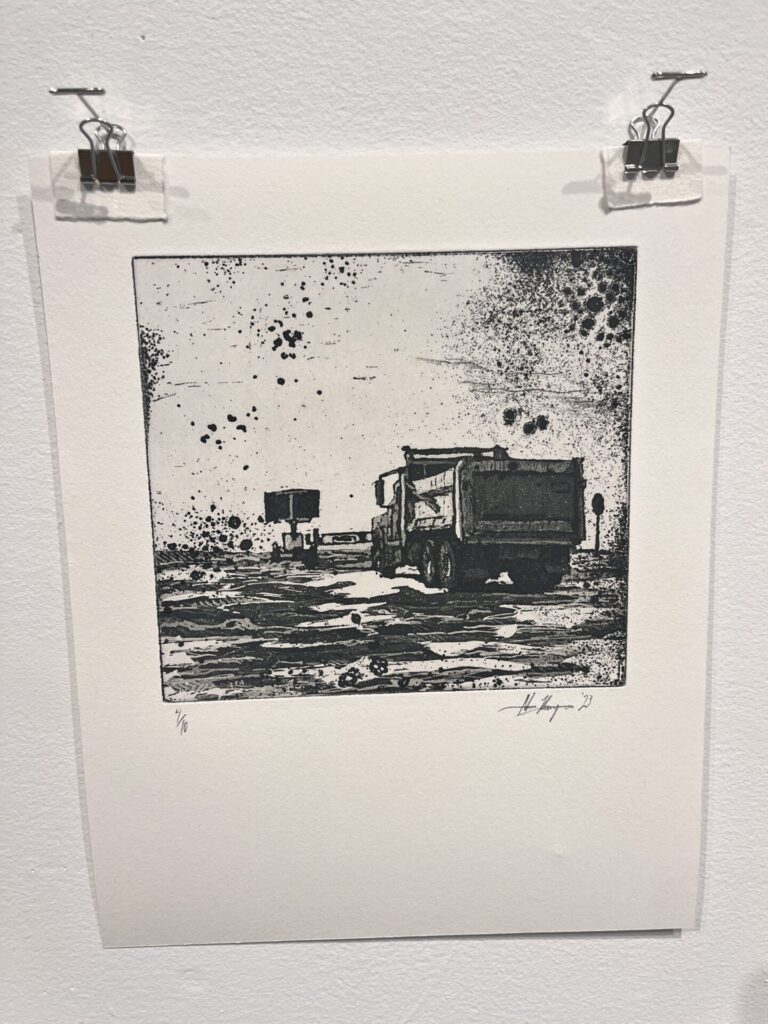
Both portray sharp lines, just through different means. Habisiak-Matczak displays sharp lines through her emphasis on shading, while Thompson presents specifics in the scene. He includes objects that aren’t architectural but are part of the environment, like cars and machines. This is most evident in the truck series.
The sculptural pieces by Habisiak-Matczak stand out from the rest of the exhibit. One is almost a perfect example of what architectural students produce in their classes as models, while the others on plexiglass are more abstract. They are interlocked with each other and standing up. Each side of the plexiglass has engravings done by the CO2 laser. The structures play with perspective. From each angle, you could tell that the piece is a reflection of a building. But, due to its curved nature and different structure, the perspective is convoluted — in a good way.
Thompson demonstrates more surroundings than Habisiak-Matczak. He clearly defines the setting of his architectural pieces by having different focal points spread throughout his pieces. A smoky, cloudy sky makes several appearances, perpetuating an industrial feel.
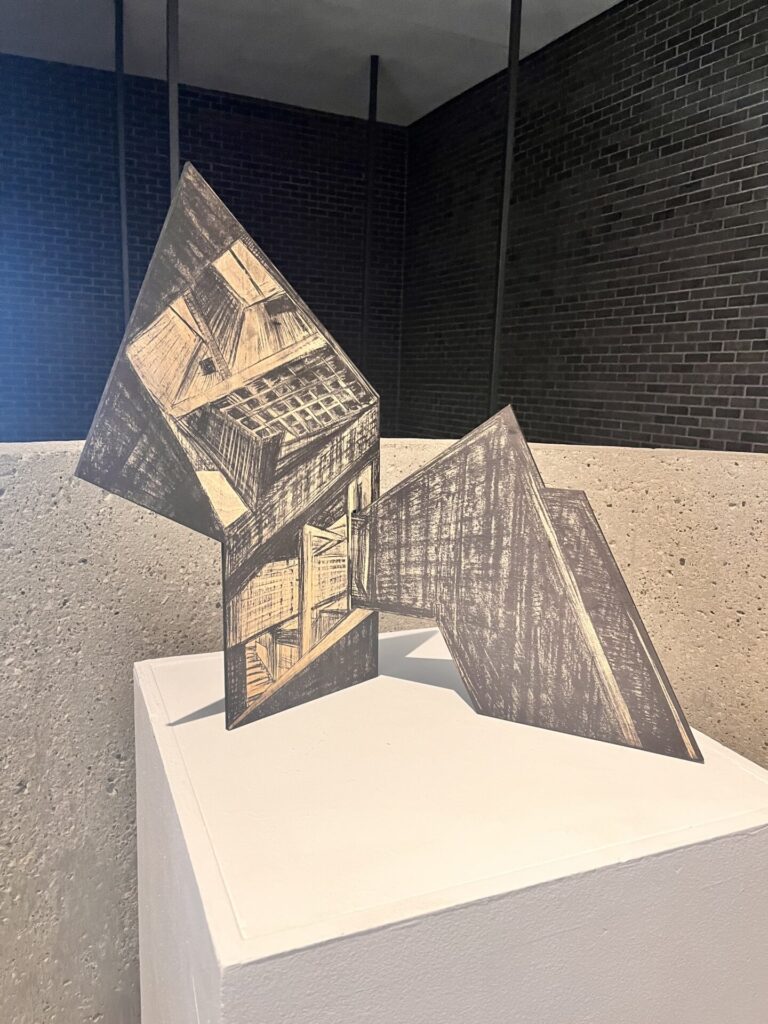
Thompson’s pieces have an exterior outlook of architecture, whereas Habisiak-Matczak’s have an interior reflection. Thompson’s pieces are always from far away, looking at the object of study, making it a more scenic and landscape-orientated artwork. Oppositely, Habisiak-Matczak places the viewer inside a structure.
The exhibit portrays a feeling of solitude, as the pieces lack the crowds or people that typically populate an industrial area or building. This could be an intentional choice by each artist to emphasize the design of the architecture over what was happening in the scene.
Built to Last: Architecture, Memory, and the Imaginary Atrium is on at the FAB Gallery until December 16.

